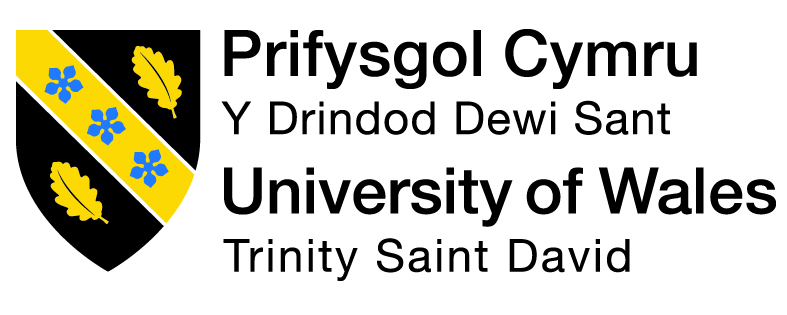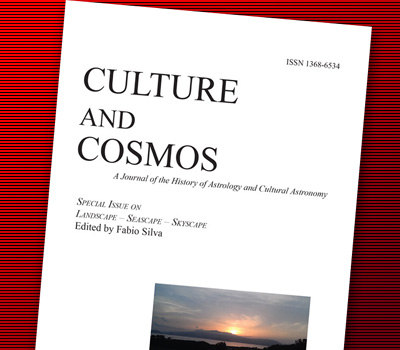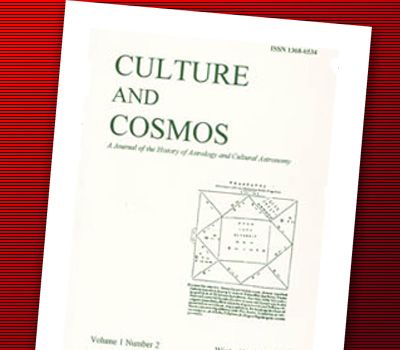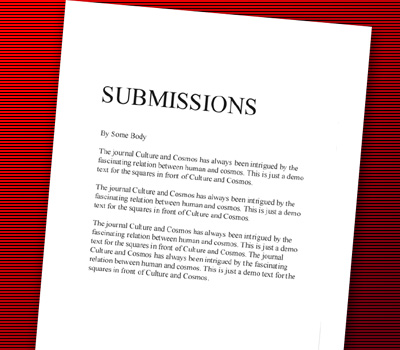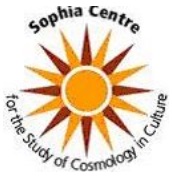We are currently seeking submissions for future volumes of Culture and Cosmos.
Volume 19
Celestial Magic as the 'Love Path': The Spiritual Cosmology of Ibn 'Arabi
Christine Broadbent
Abstract
Nature's secrets can be approached in a variety of ways and this paper explores celestial magic as the 'path of love' via the Sufi teachings of Muhyiddin Ibn al-Arabi (1165-1240 CE). Given the honorary title of 'the greatest master', al-Shaykh al-Akbar, he occupies a special place in the Sufi tradition, because his writings are by far the most extensive contribution to Islamic mystical philosophy. His terminology and works have become a main point of reference for most Sufi orders, partly due to the historical circumstances explored below. His teachings continue to be widely studied, and a range of contemporary Sufi schools, like Beshara in Scotland and Karnak in Northern Australia, have introduced westerners to the study, work, invocation and meditation of the Sufi path as passed down by Ibn 'Arabi.(2)
This paper explores his use of astrological symbolism to illustrate Sufi cosmology, as for example, his 'orientations to spirit', which are a different way of viewing the 'quadruplicities'. In Mystical Astrology According to Ibn 'Arabi, translator and author Titus Burckhardt (1908-1984) calls attention to what Ibn 'Arabi calls the 'contemplative penetration of cosmic atmosphere'. Mystical correspondences, including 'eternal prototypes' and designated prophets, are linked to planets, like the symbolic chain he draws between the moon and Adam's prophetic role as the 'mirror' of divinity.(3)
This may beg the question of an overlap between the mystical and the magical, yet any such engagement depends on cultural norms and social context for its nomenclature. Celestial 'magic', explored as an imaginative engagement with the cosmos for the production of knowledge, allows the Sufi 'love path', to be considered. Further, Tasawwuf, the mystical path of Sufism, is suggestive for the sociological discourse on the 'magical subject' and for the question that frames this paper: namely, what are the implications for our ways of knowing?
Citation: Christine Broadbent, 'Celestial Magic as the 'Love Path': The Spiritual Cosmology of Ibn 'Arabi', Celestial Magic, special issue of Culture and Cosmos, Vol. 19, nos. 1 and 2, 2015, pp. 145-66.
(1) From the programme of the Eleventh Annual Sophia Centre Conference on Celestial Magic, 22-23 June 2013: 'Magic, loosely defined, is the attempt to engage with the world through the imagination or psyche, in order to obtain some form of knowledge, benefit or advantage. Celestial magic engages with the cosmos through stellar, planetary or celestial symbolism, influences or intelligences'.
(2) Muhyiddin Ibn al-Arabi, The Wisdom of the Prophets: Fusus al-hikam, is the teaching resource most commonly used in Sufi schools. The Karnak Sufi school closed to students in 1991. I had the privilege of studying there in 1988.
(3) Titus Burckhardt, Mystical Astrology According to Ibn 'Arabi, trans. Bulent Rauf. (First published as Une Clef Spirituelle de l'Astrologie Musulmane d'apres Mohyi-d-din Ibn 'Arabi', 1950) (Sherborne, UK: Beshara Publications, 1977; repr. Louisville, KY: Fons Vitae, 2001), p. 9.

